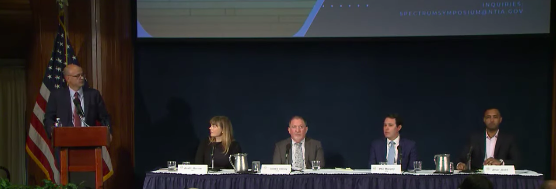Spectrum reallocation is only getting more complicated, as the airwaves get more crowded. There are certainly recent examples—the C-Band deployment delays and the ongoing dispute over Ligado’s spectrum use potentially impacting Department of Defense operations—where better and earlier collaboration between federal agencies might have headed off some of the resultant issues.
Now, with the 2.5 GHz auction recently concluded and the Federal Communications Commission having done the work to get swaths of midband and high-band spectrum into 5G development and/or deployment, conversations on spectrum policy are shifting focus to renewing the pipeline of airwaves under consideration for future use. At this moment, federal agencies are also reconsidering their roles and relationships in shaping that pipeline, and where innovation or spectrum sharing may help to bolster commercial spectrum access while not interfering with the ability of agencies as diverse as NASA, the DoD, the Federal Aviation Administration and the National Oceanic and Atmospheric Administration to do their daily work.
At today’s fifth annual Spectrum Policy Symposium in Washington D.C., representatives from various federal agencies are having those conversations. And much of it focuses on how they are, or could, collaborate with one another, as well as urging greater transparency.
“There are not a lot of easy bands left, if any, and we need better tools to be able to innovate our way through it,” said Phil Murphy, senior advisor at NTIA, during a panel discussion between representatives of NTIA, the FCC, FAA and the White House Office of Science and Technology Policy.
Murphy said that the success of the CBRS auction shows that there is appetite for shared spectrum—although panelists agreed that exclusive-license access will always have to be part of the allocations made available.
FCC Commissioner Jessica Rosenworcel’s renewed MOU between the FCC and the National Telecommunications and Information Administration (NTIA) came in for praise as some concrete, public evidence of conversations that are often going on at a person-to-person level across agencies. Agencies must also work within the legislative framework that currently exists for things such as equipment replacement—what if, for example, the federal government would pay for upgrades to more power- or spectrum-efficient equipment as an incentive, rather than replacing equipment with status-quo technology? Rosenworcel, in remarks earlier in the morning, also said that legislative clarification of spectrum rights and responsibilities may need to happen as well—something that could be relevant if the FCC were to start setting expectations not only on transmitters but receiver performance. James Linney, director of operations support at the FAA, pointed out that because of the costs of updating systems, an equipment update by itself may rarely have a business case—but if some incentives were in play for upgrades that could also consume less energy or be more “spectrum stingy”, then multiple interests would benefit. “The win-wins are there, if we look for them,” he said. But, he added, it takes more work and understanding of federal spectrum use than just looking at a spectrum chart and identifying large contiguous chunks to target.
Umair Javed, chief counsel for Rosenworcel, said that developing a spectrum pipeline is too often like playing the card game Go Fish: Essentially, commercial players call out a band, federal users all study their own spectrum cards/holdings, and then someone responds, “Go fish” —in other words, look somewhere else. If all the players involved were willing to put their cards on the table, with transparency and information sharing (and perhaps a role for industry in identifying innovative technology that could come into play), then it might be easier to distinguish between “artificial scarcity” and “actual scarcity” of spectrum. It’s going to take a concerted effort across agencies—and enough RF engineers at those agencies—to make that happen, though.
Several panelists expressed hope that innovative approaches to spectrum sharing will help increase utility and reduce risk for federal users. As spectrum use climbs ever higher, Javed said it is likely that there will be an expanded role for spectrum sharing, given the characteristics of high-band airwaves as well as the realities of the crowded RF environment.
“You don’t build single-family homes in downtown Manhattan,” Javed said.

